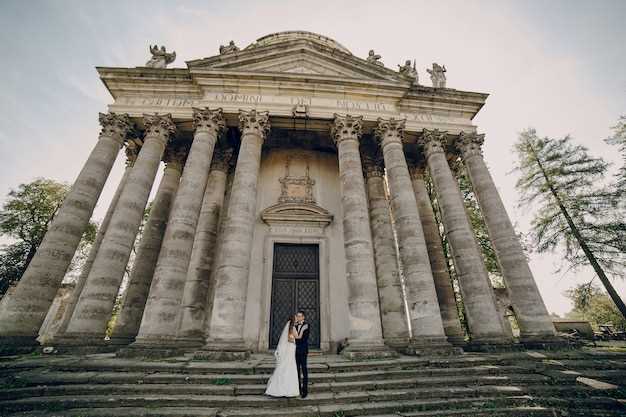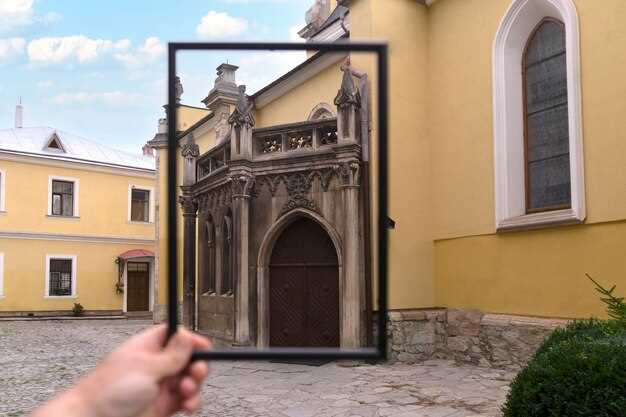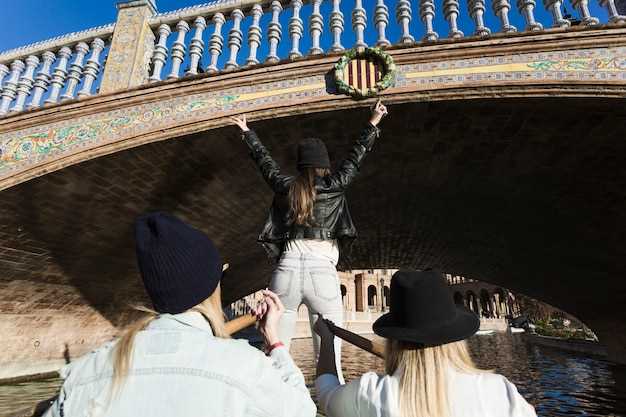
Start your Italian theatre journey with La Scala in Milan: a marble foyer, red velvet, and the memory of legendary performances stand as a temple to musical theatre, where the heart of Italian stagecraft will stir you. franco Zeffirelli’s approach shaped many classic productions, and their revival seasons keep that spirit alive. They attract family groups and first-time visitors alike, who often book guided tours to watch the stage from the gallery and imagine how artists took the stage in decades past.
Next, La Fenice in Venice rose from ashes and reopened in 1837, a symbol of resilience with its horseshoe hall and gilded balconies. This is such resilience that the city’s audiences keep returning. The venue blends modernity with tradition and carries the fashion of the city’s theatrical life, then invites you to compare seasonal operas with chamber performances that echo centuries of taste.
In Naples, Teatro di San Carlo opened in 1737 and remains the oldest continuously active opera house in the world. Its architectural clarity, bold acoustics, and intimate side galleries give you a sense of what audiences miss when a season ends. Whether you come for a grand opera or a smaller concert, you will feel the ceremonial rhythm that they have preserved for generations.
Palermo’s Teatro Massimo, inaugurated in 1897, seats about 1,350–1,380 in a dramatic horseshoe hall. A guided tour reveals the orchestra’s hidden machinery and the frescoes by Italian masters–perfect for an family evening where fashion and sound meet in a grand, yet welcoming, setting. If you seek a night where balconies glow with candlelight, this is your stop.
Vicenza’s Teatro Olimpico (1585) is the oldest surviving enclosed theatre, its stage painted by scenic artists to create a deep street vista that draws you into the drama. The theatrical lineage here feels ceremonial, and for an alternative after the Palladian spectacle, anteo offers intimate, contemporary pieces that keep the city’s performing arts alive.
Explore five iconic Italian theatres, their core genres, and on-stage performance styles
Begin with Teatro alla Scala (Milan) to feel the prestige and hear Verdi’s finest operas on a stage that has hosted premieres. Built in 1778, the house seats about 2,000 in a horseshoe layout that defines stage form and acoustics. The core genres center on operas and classical ballet, with Verdi at the center and a selection of titles that anchor the artistic identity. Despite modern upgrades, the interiors preserve the grand proportions and the spaces that frame the heart of the building. The performance style blends rigorous acting with emotional reach, letting the audience travel through theatre history from baroque to contemporary interpretations. The notes often trace a manzoni-era thread through libretti and storytelling, linking past and present. This is a totally indispensable starting point for any Italian theatre itinerary and it sets the heart of the selection.
Teatro La Fenice (Venice) In Venice, La Fenice–the phoenix–has hosted a vast selection of operas and dramatic works since the late 18th century. The core genres span Baroque contours to Romantic storytelling, with a stage language built for the singer’s line and the orchestra’s whisper. It was destroyed by fire in 1996 and witnessed a meticulous reconstruction that restored the interiors to historical Baroque opulence while integrating modern comfort. The spaces feel both grand and intimate, with the form and decoration echoing through the zones of stalls, loggias, and balconies. The artistic program often includes Verdi and Bellini, but the house also hosts films and curated screenings in seasonal cycles. Nearby Ambroeus spaces offer post-show conversations, connecting the city’s canal-side culture to its café heritage. A maria line often surfaces in contemporary productions, reminding audiences of lyrical storytelling as it travels through time and form.
Teatro di San Carlo (Naples) This is the oldest active opera house and a cradle of Neapolitan theatre. The core genres lean toward operas and dramatic pieces, with on-stage performance that emphasizes ensemble strength, expressive gestures, and rhythmic drive. Built in 1737 and restored repeatedly, the theatre’s interiors keep a historical form that communicates the city’s heart through rich gilding and spacious boxes. The house has hosted Verdi and a long tradition of opera buffa, making it a great place to hear bel canto lines translated into robust stage action. Audiences witnessed the vibrant revival of the house after restoration, as sound travels through the stalls and balconies with notable clarity. The seating zones–stalls, loggias, and gallery–offer intimate vantage points within a monumental space, while post-show discussions keep the conversation alive in the city’s lively cultural fabric.
Teatro Massimo (Palermo) In Palermo, Massimo stands as Italy’s largest opera house by capacity, opened in 1897 and renowned for grand melodrama. The core genres emphasize operas and dramatic works, with on-stage performance relying on expansive sets, monumental choruses, and refined acting that carries through the vast auditorium. Built to impress, its interiors balance classical form with modern technology, and the spaces allow for multiple dynamic zones–from pit to balconies–to blend acoustics with visual scale. It has hosted world premieres and festival cycles that bring crossover audiences, and it also hosts films and multimedia evenings that broaden the narrative beyond the stage. Renovations echo Gregotti’s architectural clarity, shaping the auditorium and lobby spaces so audiences can travel through time while staying engaged with contemporary stagecraft. After performances, Ambroeus spaces nearby offer a refined post-show ritual, anchoring the theatre in the great cultural orbit of the city. A maria aria can surface in revival programs, reminding visitors of the enduring lyric voice at the heart of Sicily’s dramatic tradition.
Teatro Regio di Torino (Turin) In Turin, the Regio anchors a long-operatic heritage and the city’s refined cultural life. The core genres center on operas and classical drama, staged with a precise, disciplined performance style that highlights ensemble balance and vocal clarity. Built in the mid-18th century and rebuilt after periods of closure, the theatre presents a formal, architectural experience where the form of the space guides interpretation. The interiors emphasize a classical vocabulary–proportions, chandeliers, and a deep stage–while the seating zones ensure intimate connection between performers and the audience. The house has hosted premiere runs and scholarly talks that align with Verdi’s repertoire and its successors, and contemporary productions keep the tradition alive by bridging historical forms with modern stagecraft. This selection totals a balanced view of Italy’s theatre spaces, inviting visitors to witness a living, historical form that remains deeply connected to the heart of Italian stagecraft.
La Fenice (Venice): Core opera genres and landmark productions
Book a bel canto program in the main theatre to feel the space align with the performance and your breath.
La Fenice, a Venice theatre rebuilt after fires and restored to host world‑class opera, has shaped its core genres since opening in 1792. Since then the house has staged opera as a living narrative, evolving with audience tastes while preserving its tradition of excellence. The programming blends Italian romance, dramatic range, and contemporary premieres to appeal to various experiences, from seasoned connoisseurs to curious newcomers. Inside the building, four spaces enable a flexible calendar: the grand theatre, the orchestra pit, a studio for previews and experiments, and an intimate recital room. This structure supports shows that cater to both grandeur and proximity, while keeping the energy of the stage intimate where voices meet the audience. The brera circle and other cultural networks connect with La Fenice to nurture partnerships with personalities who push the repertoire forward.
- Core opera genres: bel canto staples by Bellini, Donizetti, and Rossini; Italian Romantic operas by giuseppe verdi; and contemporary pieces that expand the stage language, all presented with acclaimed direction and high production values.
- Landmark productions: the theatre has hosted many shows by giuseppe verdi and other leading composers, reinforcing its reputation for excellence and a long tradition of artistic leadership considered among Europe’s finest theatres.
- Inside the spaces: four distinct spaces–the main theatre, the pit and gallery area, the rehearsal studios, and the recital room–support a versatile calendar and invite audiences to experience opera lives from different angles.
- Houses and personalities: La Fenice attracts international artists and guest conductors, whose collaborations become a showcase of talent and dedication that critics widely acclaim as a standard of excellence.
- Architects and refurbishment: bold updates by architects balanced preservation with modern acoustics and safety, a process that many in the field cite as a model of responsible restoration; discussions around alessandro and giuseppe often surface when professionals review the theatre’s design philosophy.
- Recent years and four-season rhythm: recently refreshed backstage spaces and a renewed emphasis on accessible experiences help the venue maintain its status since the late 20th century as a leading cultural house where tradition and innovation coexist until the curtain falls.
Teatro di San Carlo (Naples): Opera and ballet traditions across centuries
Plan your visit during the season to witness centuries of Italian opera and ballet at this must-see venue. Teatro di San Carlo opened in 1737 and remains the oldest continuously active opera house in Europe, with a hall that has hosted premieres and international collaborations across times.
From the moment you enter, the citys architectural rhythm reveals itself in the shape of the auditorium, gilded boxes, and sweeping balconies. The interior preserves the theatrical ethos of Italian stagecraft while inviting contemporary productions. Previous generations shaped the etiquette and the expectations around performance; this selection of performances demonstrates how the house witnessed the evolution of repertoire, and how audiences are experiencing those times in live form. Conductors such as riccardo Muti have led orchestras here, linking the theatre to an international calendar and keeping Naples in the spotlight. Every visit reveals another layer of the theatre’s living history.
To make the most of your visit, choose a seat in the main hall for a grand opera or reserve a spot in the piccolo salon for an intimate evening; the building extends across several auditoriums that accommodate both large-scale productions and chamber works. The architectural narrative blends tradition with modern touches; critics note gregotti-inspired lines in recent restorations that respect the past while improving acoustics and circulation. After the performance, explore the surrounding citys streets or the navigli-adjacent areas of creative life, and consider an ambroeus-style café as a post-show stop.
| Aspect | Notes |
|---|---|
| Opened | 1737; oldest continuously active opera house in Europe |
| Location | Naples, citys historic center by Piazza del Plebiscito |
| Spaces | Main hall plus multiple auditoriums; piccolo salon for intimate works |
| Programming | opera and ballet; Italian repertoire with international co-productions |
| Design language | gregotti-inspired modern touches in some restorations |
| Nearby after-hours | ambroeus-style cafés; navigli-inspired districts offer evening strolls |
La Scala (Milan): Signature grand opera and ballet collaborations
Choose a night for a signature grand opera or ballet at La Scala and arrive early to drink in the beauty of the auditorium.
La Scala was founded in 1778 by a group of Milanese citys leaders who sought a premier stage for Italian expression. Its early seasons showcased new works and timeless favorites, and the theatre quickly attracted the finest singers, dancers, and conductors from across Europe. The tradition set a standard that still informs programming today and draws audiences from around the world to the city.
Architect Giuseppe Piermarini designed the neoclassical structure, and the auditorium extends over a wide footprint with a horseshoe shape that optimizes acoustics. The stage area dominates the proscenium, while backstage spaces support a broad range of opera and ballet works. The overall design, from the orchestra pit to the gilded balconies, creates a theatre context that feels both intimate and expansive.
La Scala hosts diverse collaborations between grand opera and ballet. Its seasons unite classic masterpieces with contemporary commissions, and the repertoire frequently intertwines opera scenes with dance sequences in cross-genre performances. Some programs were entrusted to guest directors and choreographers, hosted by the theatre, offering a fresh take while preserving the house’s signature tone. Each performance centers on a core collaboration between music and movement, and these concerts and performances showcase the finest craft and attract audiences who crave both tradition and invention.
The house remains a living museum of art directions: the interior art, the angelo-inspired motifs in the decorative trim, and the fonte accents in the foyer all serve as reminders of the theatre’s unique character. The scalas identity extends beyond the main house to workshops, tours, and collaborations with other locations, making each visit a chance to explore a different layer of Milan’s cultural fabric. The tradition of hosted collaborations puts the city’s arts scene on display for locals and visitors alike.
To plan well, check the calendar for the works you want, pick seats in the stalls or the first balcony for the best balance of sound and view, and consider a backstage tour to see wardrobes, sets, and rehearsal spaces. The theatre also offers occasional cinema screenings of historic performances, broadening access to the scalas finest moments for fans who cannot attend every night. In the heart of citys life, La Scala remains a benchmark, hosted by a dedicated staff who maintain the building and curate a program that respects tradition while inviting new talents.
Teatro Massimo (Palermo): Regional repertoires and revival trends

Plan your visit today to experience how Teatro Massimo curates regional repertoires with a modern edge. Inaugurated in 1897, this storied house has been entrusted with a mission to honor Sicily’s vocal and orchestral traditions while embracing modernity. Its Milanese-inspired architecture frames a stage where restoration work and state-of-the-art acoustics meet to deliver performances with clarity and warmth, and the audience experience is always engaging.
Three threads shape the season: operas rooted in regional sensibilities, Italian premieres, and bold ballets. Alla Siciliana touches color many titles, giving regional flavor to productions, while popular classics anchor the calendar. This dynamic mix keeps events fresh, and a show could travel beyond Palermo, inviting curious visitors to explore what the house can offer here.
Revival trends emphasize faithful restoration of scores and staging practices, paired with contemporary dramaturgy. The house collaborates with local archives and Milanese experts, and even other institutions, to re-create authentic gestures and tempos, while remaining a living venue for being today’s audiences. Characterized by careful research, these revivals connect storied history with current taste and highlight how the theatre stays relevant.
Here are practical steps to maximize your visit: check the events calendar today and decide what titles match your dates; book three performances in advance to sample regional repertoires, revived scores, and ballet pieces; arrive early for a pre-show talk that explains restoration approaches and offers context from guest curators. This approach helps you experience the full spectrum of what Teatro Massimo offers, from intimate scenes to grand, audience-driven moments.
Conclusion: Teatro Massimo remains a dynamic hub where regional repertoires and revival trends converge, making it a must-visit for anyone exploring Italian theatre and its living, evolving traditions.
Teatro dell’Opera di Roma (Rome): Modern programming, ticketing, and accessibility

Buy online through the official box office and select accessible seating if needed; arrive 30 minutes early to locate your seat and collect tickets on mobile or in print, ready for a show.
The programming now blends opera, ballet, and musicals with contemporary works; these three facets drive a bustling season that attracts international stars and personalities. The house began expanding its repertoire after 2010 and routinely invites guest companies from milano and beyond, enriching the city’s cultural calendar.
The ticketing system uses an online seating map with clear pricing by zone; tickets can be sent to a mobile wallet or printed at home; entrusted staff help guests with special needs and group bookings, while flexible policies support late arrivals on some performances. Inquiries show that many asked for more flexible viewing options, and the box office has responded with alternate seating arrangements and accessibility services. Viewing options include stalls, mezzanine, and elevated galleries with clear sightlines.
Accessibility: The venue provides step-free routes, lifts, accessible restrooms, and induction loops to assist hearing devices; staff are trained to guide visitors, and nearby hotels offer additional accessibility resources. Service animals are accommodated where appropriate, and staff can provide assistance with seating and transfers to ensure a comfortable viewing experience.
Design and atmosphere: The theatre preserves a traditional red-and-gold interior design and fashion-forward lighting, with renovations that connect the main auditorium to backstage spaces; a construction program modernizes circulation across three floors. The complex includes several venues and auditoriums; the reputation rests on meticulous staging and attentive service. The auditoriums host a wide range of events, from opera to cinema-style screenings on special nights, and the bustling schedule keeps audiences returning.
Bottom line: For a complete Roma experience, pair a performance with a stroll through nearby landmarks and a comfortable stay at a central hotel; these steps help you enjoy the show and the city. The venue hosts leading productions and collaborates with international partners, welcoming guests from milano and beyond. Check the official site for current listings, seating options, and accessibility services before you travel.
